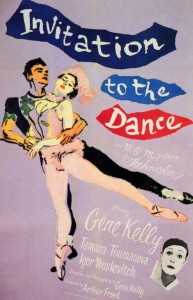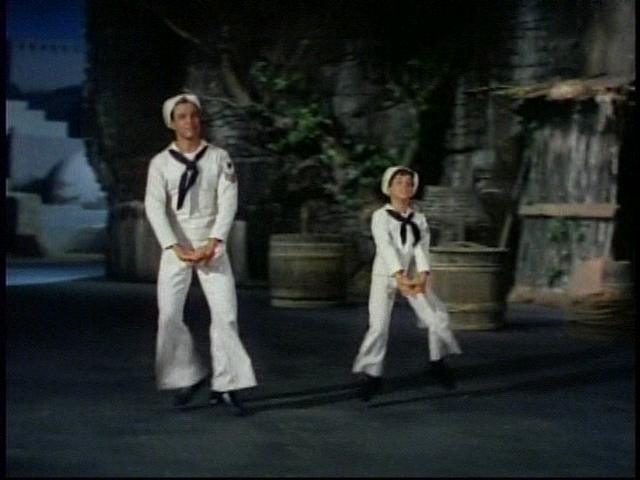|

Synopsis:
Gene Kelly directs three wordless dance vignettes: in “Circus”, Pierrot (Gene Kelly) longs for a beautiful dancer (Claire Sombert) who is already in love with an acrobat (Igor Youskevitch); in “Ring Around the Rosy”, a bracelet passes hands from a wealthy husband (David Paltenghi) to many others, including a prostitute (Tamara Tournanova); and in “Sinbad the Sailor”, a sailor (Kelly) and a young genie (David Kasday) dance with animated figures from the Far East.
|
|
Genres:
- Dancers
- Ensemble Films
- Gene Kelly Films
- Love Triangle
- Sailors
Review:
This creative undertaking by Gene Kelly — a movie told just through dance and music, with no words — was filmed in 1952, but didn’t reach audiences until 1957, when it failed to recoup expenses; today, it comes across as a reasonably enjoyable experiment. The middle segment — “Ring Around the Rosy” (likely inspired by Ophuls’ La Ronde) — is especially well-done, and moves along at a fast clip. The first vignette — “Circus” — is the artiest, and the least interesting story-wise (though the dancing and visuals are arresting). The final story — “Sinbad the Sailor” — is guaranteed to appeal to those who enjoy live action-animation combos, but its decidedly “Orientalist” bent is dated and mildly offensive. Ultimately, this one is not for all tastes. but remains worthy viewing by all film fanatics as a unique entry in cinematic history.
Redeeming Qualities and Moments:
- Gene Kelly as Pierrot

- The enjoyable middle sequence

- David Kasday as the Little Sailor/Genie

- Creative choreography throughout
Must See?
Yes, simply for its historical relevance.
Categories
Links:
|
One thought on “Invitation to the Dance (1957)”
A must. I hadn’t seen this in years and, surprisingly, it’s a lot better than I remembered. It’s not surprising, though, that it failed at the box office. It was, as noted, an experiment and I’m sure its non-cookie-cutter aspect as entertainment did not work in its favor.
However, one has to admire its ambition and inventiveness. It’s a very satisfying film for dance enthusiasts (which I’m not, generally). It’s also striking in its precise art direction; very keen use of color.
Kelly’s signature style is evident throughout – but, since it’s all-dance, we realize how regular musicals limited Kelly. There’s a freedom in the work here that’s joyous. Like Bob Fosse, Kelly often demonstrated that dance had to communicate something; simply making pretty pictures with bodies was not as challenging to him. Some of his work here is rather erotic – i.e., the ‘web of carnality’ sequence in ‘Circus’. As well, some of what’s served up here comes off as somewhat gay – or, at least bisexual. (Though that could just be me.)
The mixture of stories is a nice blend. The first does have a tragic element that could have been an audience turn-off. However, if people didn’t leave after part one, a frothy souffle – inc. a terrific Veronica Lake wanna-be! – followed in part two (I wonder if the ‘Stage Door’ sequence inspired Stephen Sondheim to write ‘Waiting for the Girls Upstairs’ for ‘Follies’) – and the best is kept for last. Part three’s craftsmanship is mesmerizing.
Easily a film ffs could return to gladly from time to time.